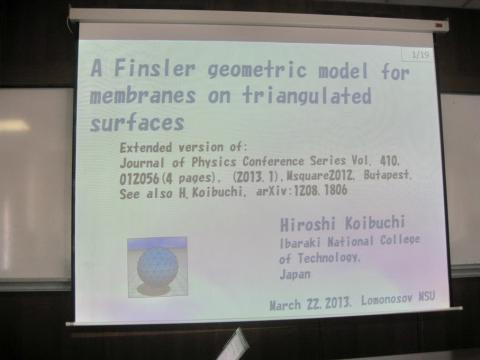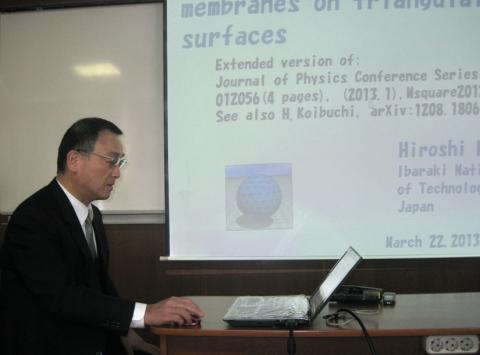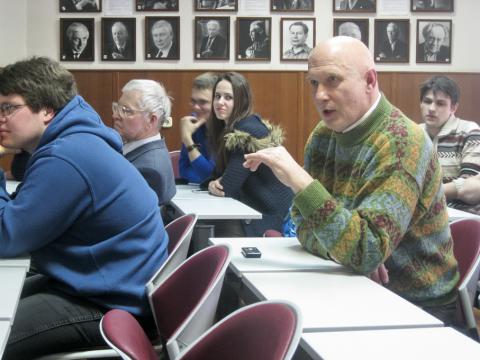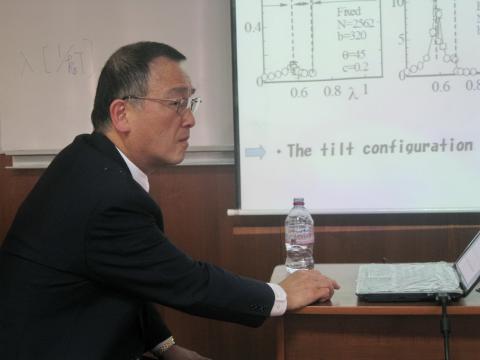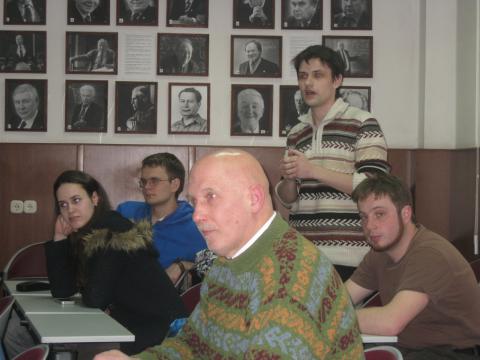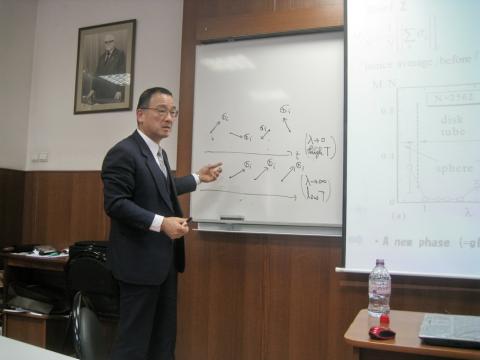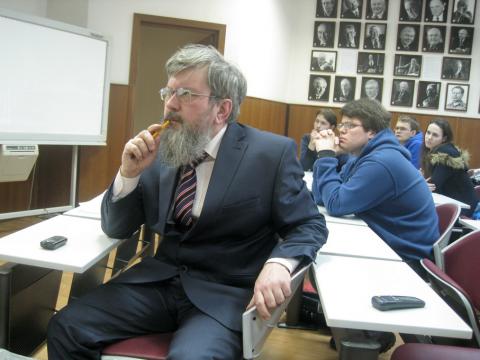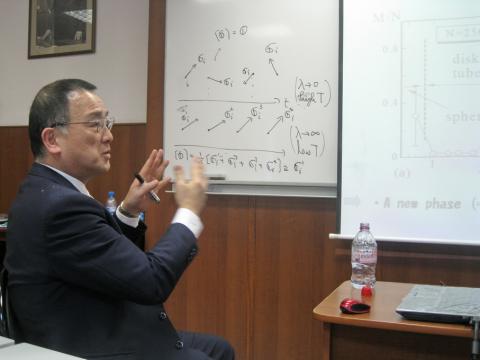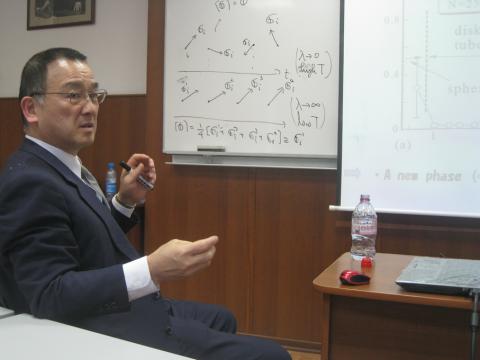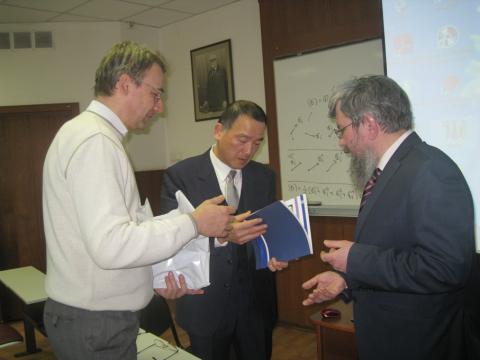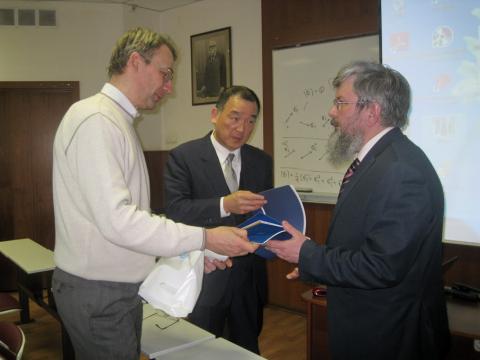Вы здесь
Лекции профессора из Японии
Профессор Хироши Коибучи (Национальный технологический колледж Ибараки, Япония) прочтёт на факультете ВМК МГУ две лекции о физике мембран и современных математических методах моделирования поверхностей:
Четверг, 21 марта 2013 г., 18:00, ауд. 685
Introduction to the membrane physics and simulations
Membranes are the 2D sheets of atoms or molecules that differ from the 3D medium in which they are embedded. The thickness of membranes is on the order of 10^{-9}m, while the length and width are about 10^{-6}m, so the physical membranes are thin, flexible and easily deformed. Due to this extreme flexibility, the membranes exhibit large thermal fluctuations. Models for computer simulation of membranes can be grouped into two classes: atomistic models that start from individual molecules and their interactions, and continual models that start from the continuum description of membrane in terms of elastic energy. These two classes of models are complementary and should be considered as two parts of a multi-scaled modeling approach. We shall review the essential results of recent research involving continuum models and simulations of network models of fluctuating membranes.
Пятница, 22 марта 2013 г., 16:20, ауд. 685
A Finsler geometric model for membranes on the triangulated surfaces
From mathematical point of view membrane is a mapping from a 2D surface M to R^3. If M is of sphere topology, the image X(M) corresponds to a spherical membrane. The shape of X(M) is governed by surface tension energy and by bending energy. The latter strongly depends on the chosen surface model. There are several well-known surface models, such as Helfrich & Polyakov (HP), Landau & Ginzburg (LG), and others. Their evolution has been elaborately investigated both numerically and analytically. For this reason it is particularly interesting to study a surface model based on the Finsler geometry (FG), which is not studied so thoroughly and which gives a more general framework than the Riemannian geometry. We consider a Finsler geometric surface model by Monte-Carlo simulation. The main question in this investigation is the existence of an anisotropic phase. We check and confirm that the FG surface model is well-defined, and then we demonstrate that the tubular surface may be easily obtained in this model.
Приглашаются все желающие. Лекции читаются на английском языке.

